We have spent a lot of time on this site extolling the virtues of the lake and wetland habitats that Van Norden Lake provide. You can find out more about the value of wetlands from the large body of literature available on the internet. In this post let’s discuss the nitty-gritty of what will happen to those habitats if Truckee Donner Land Trust proceeds with their plan to drain the lake.
The existing habitats in the Summit Valley are shown mapped in Figure 1. As you can see the lake now covers 80 acres at the west end of the valley. Surrounding the lake is a band of wetlands that covers an additional 73 acres. There is no mistaking open water lake habitat. Wetlands, however are not as easily recognized. Let’s use the definition used by the Army Corps of Engineers and quoted in the U.S. Forest Service manual on Forested Wetlands
The term “wetlands” means those areas that are inundated or saturated by surface or ground water at a frequency and duration sufficient to support, and that under normal circumstances do support, a prevalence of vegetation typically adapted for life in saturated soil conditions. Wetlands generally include swamps, marshes, bogs, and similar areas.
Corps of Engineers Wetlands Delineation Manual (U.S. Army Corps of Engineers 1987)
Anyone that has ever tramped around Lake Van Norden in spring and early summer can attest the to presence of the wetlands around the lake. It is in fact the presence of the aquatic vegetation that makes the habitat a rich breeding ground for waterfowl, shorebirds, amphibians and fish. Note also that there are currently 179 acres of existing wet meadow habitat that is thriving in the valley
Now let’s consider the various scenarios that could affect the lake and wetland habitat in the valley. First let’s consider the most drastic change, TDLT’s plan to notch the dam 5 ft and drain the lake and wetlands. The resulting habitat map for this course of action is shown in Figure 2. This move effectively removes the lake and wetland habitats from the Summit Valley and all of the fauna and flora that these habitats support. The wet meadow habitat will expand of course, but the net change will be a large loss of bio-diversity in the valley.
Preserving Habitat
There is no feasible scenario that would preserve all the lake and wetland habitat. However, there are two scenarios that can preserve enough of these habitats to sustain some of the existing bio-diversity. In Figure 3 the “bare minimum” preservation scenario is shown for notching the dam by 2.2 ft to maintain 50 acre-ft of water in the existing lake.
This bare minimum will remove almost two thirds of the lake and wetland habitat, but the remaining third would still provide enough lake and wetlands to retain much of the fauna and flora to sustain the bio-diversity in the valley. This scenario would cost the same as the more drastic 5 ft notching of the dam and would require no additional funds.
The optimum solution for preserving lake and wetland habitat in the Summit Valley is to maintain water in the back bay area of the lake. There is a two lake scenario in which a low impact weir could be constructed that would maintain 50 acre-ft of open water in the back bay area. The resulting habitats are shown in Figure 4.
This is the only scenario that preserves a large portion of the unique shallow water/wetland habitat in the back bay area that provides ideal habitat for breeding grounds for water fowl, shore birds and amphibians. This scenario would require the construction of the new weir which would be an added expense (probably in the $500-800 K range). The additional funding that would be required however only represents a small percentage of the overall cost of the property and government grants and loans for preserving wetland habitat could offset the costs.
We of course would like to see the two lake solution implemented to maximize habitat preservation. Barring that we believe that the 2.2 ft notching of the dam would truly be the bare minimum that would still retain the bio-diversity of the Summit Valley.

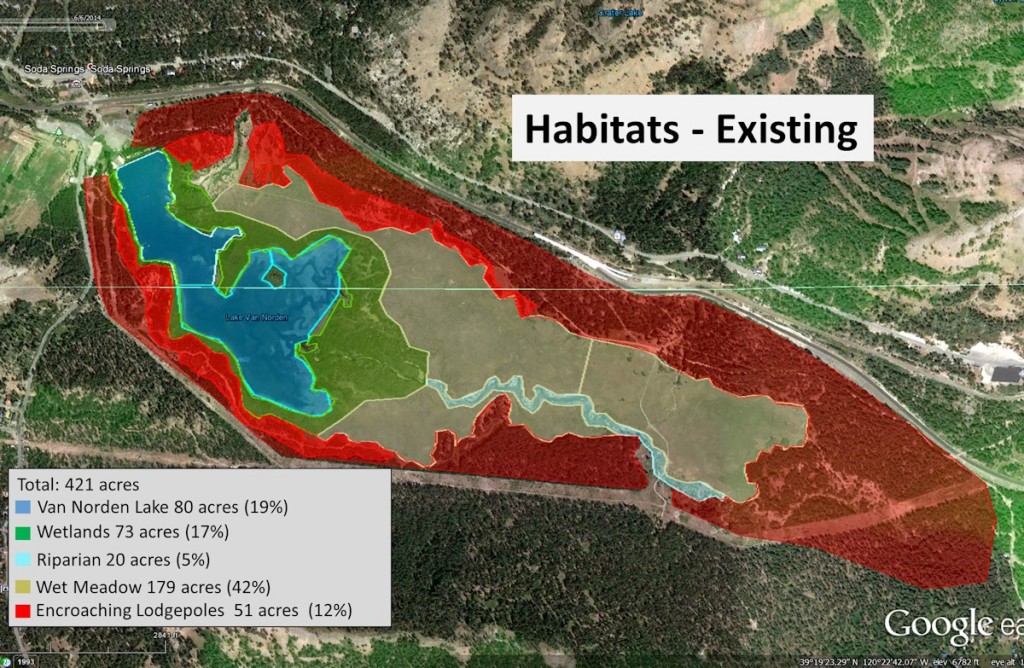
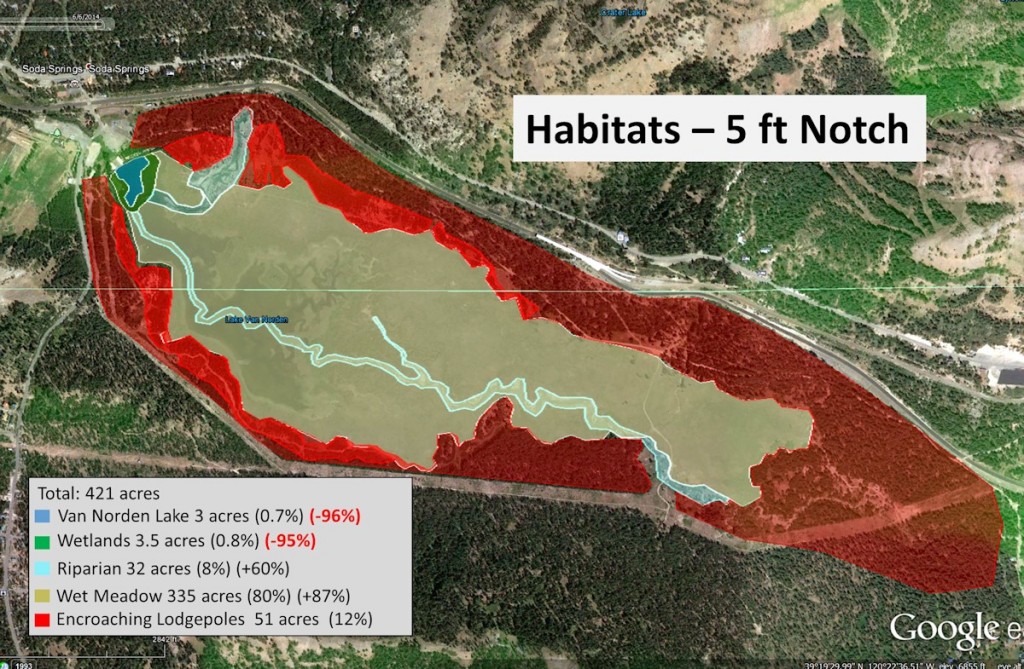
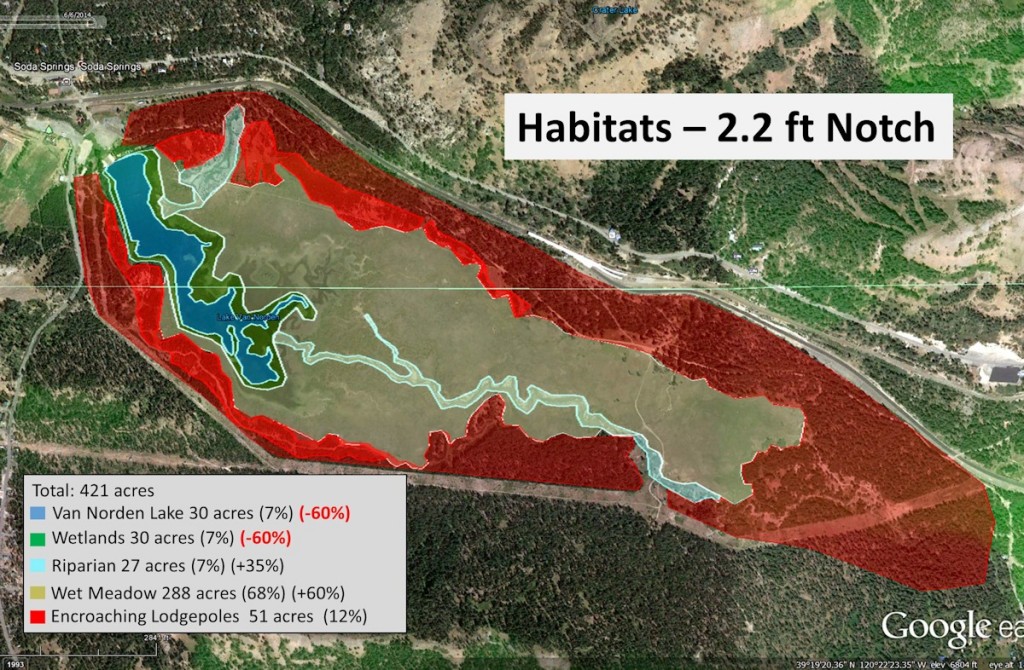
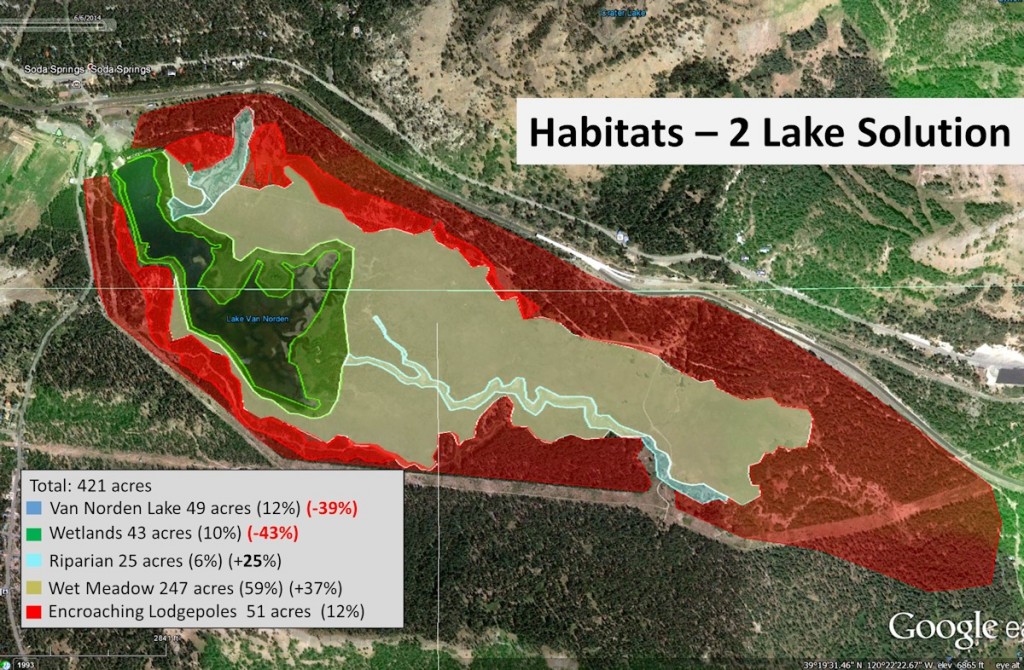
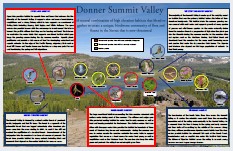
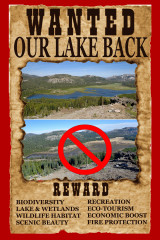
Pingback: A Tale of Two Meadows | Save Van Norden Lake and Wetlands